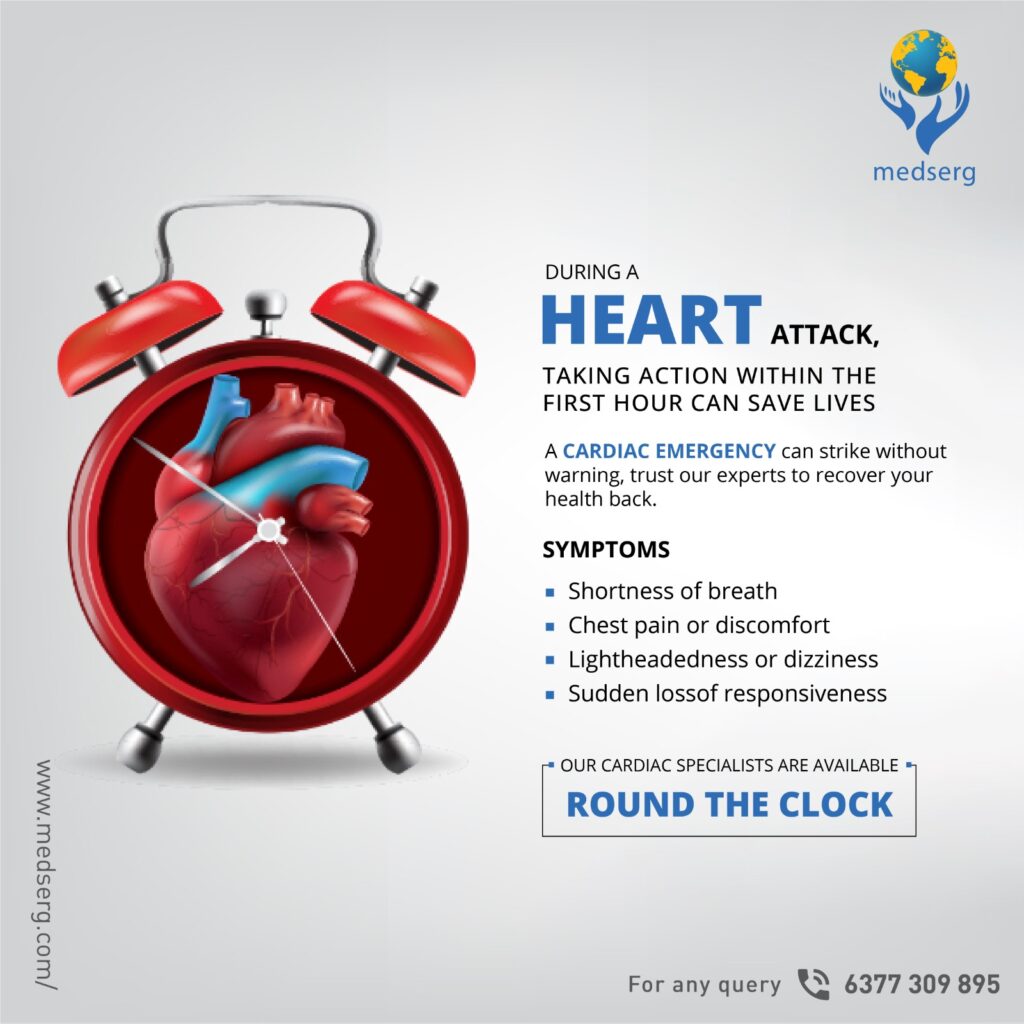Heart attacks are becoming increasingly common in our country. According to the Indian Heart Association, 50% of all heart attacks in Indians occur under 50 years of age and 25% of all heart attacks in Indians occur under 40 years of age, with the urban population being three times more susceptible than people living in villages. Given such disturbing statistics, it is prudent to know some measures or steps that may come in handy in the event of a person getting a heart attack.
The tell-tale warning signs or symptoms of an impending heart attack are:
- Shortness of breath
- Chest pain that feels like pressure, squeezing, or fullness
- Pain radiating to the shoulder, arms, neck, jaw, back, and stomach which is intermittent or lasts a few minutes
- Cold sweats
- Nausea or vomiting
- Lightheadedness, dizziness, and/or fainting
- Anxiety
- Feeling restless or panicky
- Unexplained fatigue, especially in women and the elderly
- Numbness, aching, or tingling sensation, usually in the left arm, but may occur in the right arm too in some cases
- Breathlessness or wheezing or coughing
Here are some steps worth remembering:
- Call your local emergency number: This is the first and the most important thing to do if you or someone around you gets a heart attack. This is a serious, life-threatening situation that requires immediate medical attention.
- Get an aspirin: Unless you or the person suffering an attack is allergic to aspirin or the doctor has forbidden it, an aspirin along with a glass of water can help prevent blood clots and provide some relief.
- Tight clothing: Make the person lie down and loosen any tight clothing
- Nitroglycerine tablets: If the person has been advised of any chest pain medications, such as nitroglycerin, administer the medicine as directed by the doctor.
- CPR: If the person is unconscious, then it is necessary to perform a Cardiopulmonary Resuscitation (CPR) which is a basic first aid treatment. The steps to be taken to perform a CPR are:
- Make the person lie down on his/her back on a firm surface.
- Place the heel of your one hand over the breastbone, in the center of the person’s chest, and place your other hand on top of the first hand.
- Keep your elbows straight and use your body weight to press down or compress the person’s chest by about 5-6 cm.
- Continue the compressions at the rate of about 100 to 120 times per minute till the emergency medical personnel arrive.
- If you are trained in CPR, after some chest compressions, try to open the airway of the person by tilting his/her head back gently and lifting the chin forward.
- After this perform a mouth-to-mouth resuscitation by closing the nostrils of the person. Next, cover the person’s mouth with your own and give some breaths into the person. Do not breathe with excessive force or give too many breaths. Thirty chest compressions followed by two such rescue breaths is normally considered one cycle. Repeat this procedure till medical help arrives or the person shows signs of recovery.
The above steps are easy to remember and one must have the presence of mind to perform them when the need arises. Doing so may help save a person’s life.







